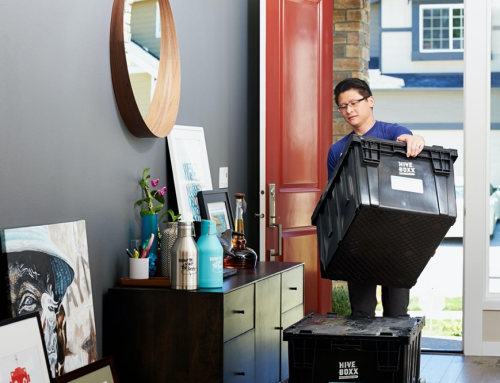Last week I wrote a post about the increase in severe anxiety among privileged teens. This week I want to talk about how to reduce the anxiety.
Severe anxiety debilitates. If a child (or adult) avoids everything that makes them uncomfortable their life is seriously hindered. What can we do about the trend of avoidance and anxiety many teens experience? How can we curtail it?
Bring on unpredictability
Young people have learned how to sidestep uncertainty and discomfort. Such everyday things as waiting or face to face interactions cause discomfort for many teens. To avoid those uneasy feelings, many kids grab onto methods of control such as immediate gratification or technology. For example, phones give the illusion of control for teens. They can find out all kinds of data without talking to a live person before committing to a purchase, event or answer. They can suppress emotions by focusing on memes or wikipedia.
Kids rarely use the phone part of their smart phones because phone conversations are extemporaneous. Kids can’t fully prepare for the other person’s contribution to the conversation, nor can they perfectly formulate their own best reply. They have to wing it or go with the flow during the actual conversation. Kids don’t roll with it very well anymore. Unpredictability causes them anxiety. As it does for all of us, but most adults have learned to pivot, adjust and take things as they come. We had to.
Most adults grew up talking on the phone or in person to our friends and family. We didn’t get to plan our every word. We spoke and hoped our words were well received. It was awkward sometimes, delightful others.
Rules about amount of phone/computer usage in the home, could go a long way toward helping kids learn to pay attention to humans. Oh they won’t like living without their phones but as adults/parents sometimes we have to bear their fury.
Without Google at their fingertips they have to handle not knowing everything. They might even reach out and ask another person for an answer. Without phones or other technology in their faces they will make more eye contact with people. Texting can be replaced with talking. Talking gives them practice with spontaneous conversation. Spontaneous conversation teaches them how to roll with the moment and other’s reactions. The fear of not knowing what to do or say while connecting with another dissipates with practice.
Feeling exposed? Good
My parents did not make it too cushy for me. I distinctly remember crying before every swimming lesson as a child. Did my mom let me quit or talk to the young woman teaching the lessons about making them more comfortable for me? No. Do I dislike swimming to this day? Yes, but I figured out how to survive and the act of getting through an uncomfortable experience made it easier for me to get through other difficult experiences. I might like swimming better today if my lessons would have went smoother but overall I think I just don’t like having my face in the water or being cold. I learned I don’t like those things and I learned I can get through something uncomfortable if I have to.
My dad used to have something called “no thank you helpings” at our dinner table. I was a picky eater as a child. Instead of allowing me to abstain from eating anything that contained such vile (in my mind) foods as mustard and onions, he made me eat a “no thank you helping”, which was about two tablespoons of whatever food I did not want to eat. It was tough and I gagged a few times but now I eat just about everything including mustard and onions.
The “no thank you helping” concept could go a long way in helping kids develop resilience. The only way to learn something new or do something uncomfortable is to do it. Things get more comfortable as they become familiar. For instance, many people say they can’t do yoga; they are not flexible enough. If they do yoga they will become more flexible. Two tablespoons of something is a small enough exposure that it is not excruciating but big enough that it gives kids a taste of what it feels like to be uncertain, uncomfortable and a little anxious.
What is manageable?
Key points to learn for every person with an overactive fight or flight response are how to stop overestimating what is dangerous and underestimating what they can handle. This takes practice because to do this, actual neural pathways in the brain need rewiring. Old patterns must change.
For example, instead of fretting at the sight of an incoming phone call, the teen needs to take a deep breath, answer with a kind hello and prepare to listen and respond to whomever is on the other end of the call. If they need a mental script, fine. Create one. It’s also fine if they tell themselves, I will take this call for five minutes and then beg off. This is a safe and helpful amount of exposure. Chances are they end up enjoying the conversation and it goes longer. No matter the length of the call, kids learn they can survive a spontaneous conversation. Their nervous system and neural pathways get stronger with each exposure and survival.
You’re in charge
When a teen relies on everyone else to make her life easier, she has no power. She is at the mercy of others and that is scary. If they feel they have control and can manage a situation, they worry less. Parents have learned to back up their children in everything they do. I get a notification from the school about every graded assignment my children turn in. I have three children and they each have four to seven classes. That’s 15+ classes I get to monitor if I choose. I choose not to. I look over their overall grades but I do not question or analyze each assignment. I let my kids be in charge of their work. One, I don’t want to spend a big percentage of my day looking over schoolwork. Two, I trust my kids to do their own work. If I have to babysit their homework, then I have disempowered them. If they have difficulty with an assignment and I can help them, I do. If I can’t help, I tell them to talk with their teachers. They are their own advocate. I want them to know it is OK to ask for help, but not OK to dodge responsibility. The less helpless they feel the less anxiety.
Good relationships ease anxiety
 Many young people spend a lot of time alone. With heavy schoolwork loads and the prominence of social media/technology, there is less time spent hanging out in person. This is an unnatural state for humans. We are meant to connect with others. As an introvert advocate, it may sound strange to encourage so much collaboration and connection with others. All of the research I have done over the last two years, points to the necessity of having others soothe us. Companionship can be paired with solitude for true introvert equanimity, but there is no getting around the importance of social engagement.
Many young people spend a lot of time alone. With heavy schoolwork loads and the prominence of social media/technology, there is less time spent hanging out in person. This is an unnatural state for humans. We are meant to connect with others. As an introvert advocate, it may sound strange to encourage so much collaboration and connection with others. All of the research I have done over the last two years, points to the necessity of having others soothe us. Companionship can be paired with solitude for true introvert equanimity, but there is no getting around the importance of social engagement.
Relationships that make kids feel seen and heard are an amazing panacea to anxiety. The more a child feels they are safe and seen, the less reaction in their nervous system.
Summary of anxiety reducing tactics
- Less technology. More extemporaneous interactions and activities.
- Small amounts of exposure to uncomfortable situations and things. No thank you helpings.
- Stop overestimating danger and underestimating personal abilities.
- Empower kids by giving them responsibility and allowing them to advocate for themselves. No rescuing.
- Establish safe and loving relationships.
Is your teen suffering from debilitating anxiety? How are you enabling your child to feel helpless? What helps your child build resilience?
If your teen struggles with anxiety, I’d love to help you work with him or her to build their resilience. Contact me for relationship coaching.
The Quiet Rise of Introverts: 8 Practices for Living and Loving in a Noisy World is out now! Learn to find acceptance, peace and love as an introvert.
Click the image below to order your copy.









You’re a good mom, Brenda. Your kids are lucky to have a mom who thinks, who cares, who wants them to grow up and be independent, to be able to make their way in this world, with predictable unpredictability, to be tough because life is often very hard.
I agree that it’s not healthy to make things comfortable and easy for our kids. That doesn’t prepare them for life on their own, for a life with struggles and major disappointments, and failure. Failure is fine. Just get up and go again. And again. And again.
And a work ethic: above all, a work ethic. A study ethic. Kids learn early, or not at all, how to study, how to learn, how to analyze and think. It’s not what they learn in school that matters, nearly as much as the ability to learn. To ask questions. To ferret out answers. To think below the surface appearance of things.
I appreciate, always, your writings every week, and your book. I appreciate the heart that you bring to everything you do. Your inner beauty shines through always. Keep shining!
Michael
Hi Michael! Thank you for all of your kind words. I absolutely 100% agree learning to learn and love learning is crucial to well being and “success”. My oldest son said that is the first thing he would change about his school – to stop teaching to a test and start creating a love of learning and engaging curiosity. They have to be able to bounce back from disappointment and figure things out when there is no one to help them. I believe in letting kids know you are there for them to guide and help but they have to put forth effort too. I’ll keep bringing my heart to everything I do. It always makes sure it’s along for the ride anyway. 😉 I appreciate the time and earnestness which you put into your contributions here on space2live. I love learning from you.